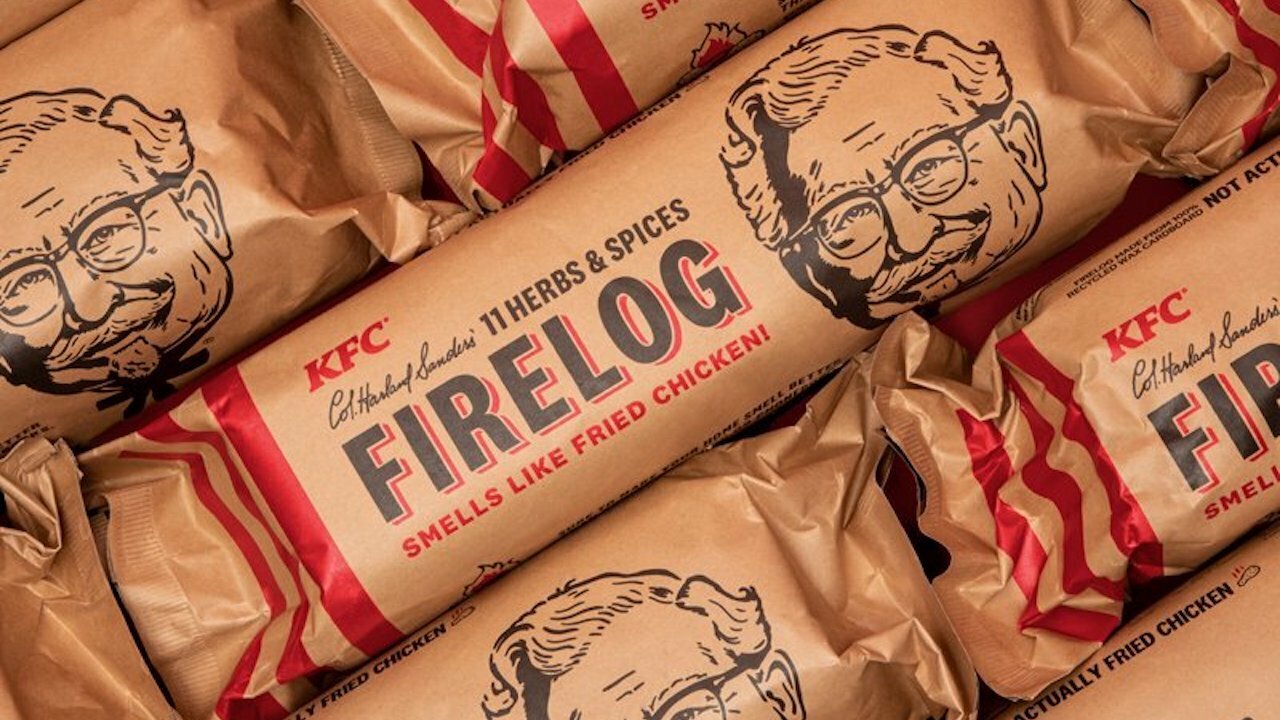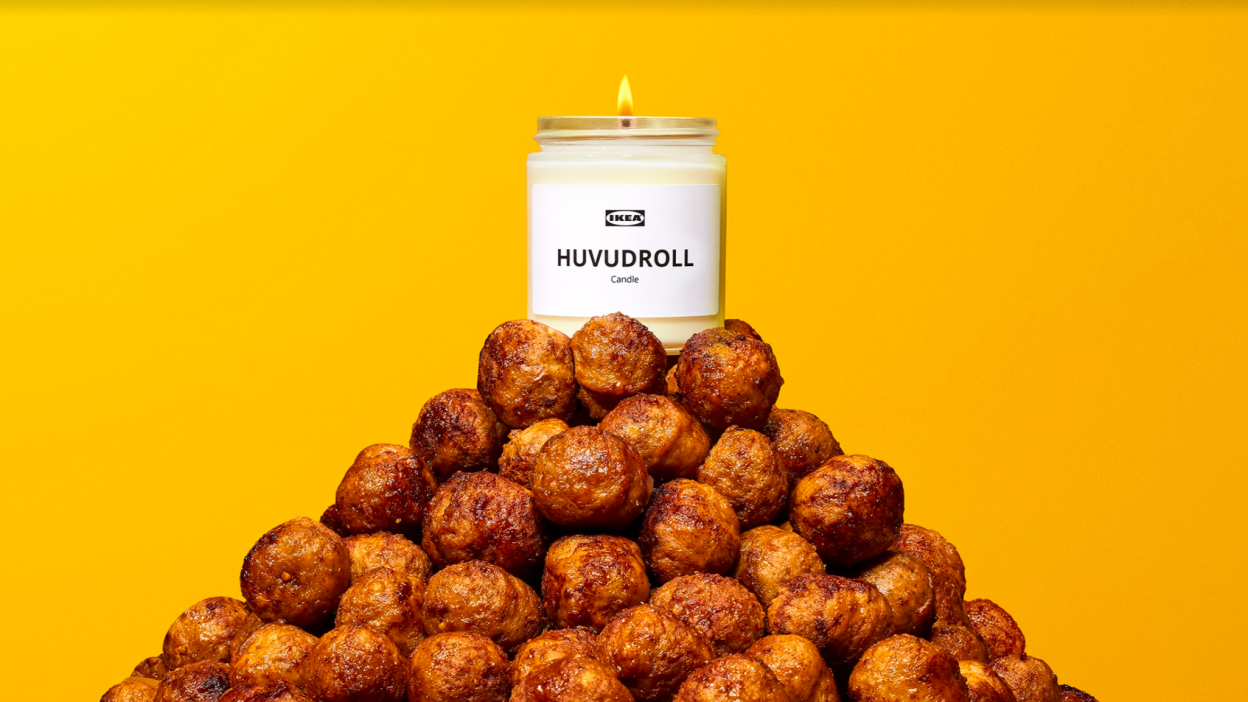You might be thinking, “This can’t possibly be a thing.” But it is. In recent years, KFC, McDonalds, and IKEA have injected the smells of their iconic meat dishes into products that aren’t meat. Sure!
The allure of the meat scents is a little unclear. Maybe buyers are in it for the novelty, lighting up their meat log once and then banishing it to their deepest cabinet. Maybe people are into the sheer weirdness of it all, the same way they just had to try mac-and-cheese flavored ice cream. And maybe there are people out there who simply love the stench of a mall food court, but only when there is no food in sight.
But what exactly is appealing about smelling meat out of context? Why might people buy these olfactory Frankensteins? And is it morally wrong to subject your houseguests to a thick, beefy haze?
Meat scents: Let’s dig in.
11 herbs and memories
As we’ve known for quite a while now, brands are constantly capitalizing on… well, everything. Wherever there are potential customers who might make a purchase, the brands will be at work.
Consider the KFC chicken log, which is basically a Duraflame starter log designed to smell like a hunk of Kentucky Fried Chicken. The brand didn’t just start selling it as a joke for its own sake — it was betting on a psychological response.
“The creation of the iconic 11 Herbs & Spices Firelog was based on research reported in Psychology Today, stating that smells trigger areas in the brain strongly linked to memory,” a KFC spokesperson said in an email. “In 2018, when we launched the iconic gift for the first time, we wanted to take that insight and give customers a way to celebrate their love of fried chicken while enjoying the holidays with family, friends, significant others, in-laws, or bizarre extended family in a uniquely KFC way.”
Ah yes, the holidays. The time of year when we gather with our loved ones to light up a chicken stick.
But the brands are onto something when it comes to linking smell and memory to influence consumer decisions. “When people experience things in their lives, the olfactory component tends to help form those memories very tightly,” said Kara Hoover, a biological anthropologist and professor at the University of Alaska, Fairbanks who specializes in olfactory evolution. “So when you smell something, it evokes the memory and evokes how you were feeling at the time. Whether it was good or bad, it doesn’t matter.”
From Hoover’s perspective, scented products are a way to infiltrate the consumer’s household even more — a way to reinforce a brand experience outside their place of business. This method of advertising has become more popular since the start of the pandemic, she said, especially when quarantine restrictions were at their heaviest and people were often unable to go to businesses in person.

Global emergencies aside, Hoover has noticed a growing interest in olfactory experiences over the past decade, specifically in the VR gaming and porn industries.
“I think one of the first successful [olfactory experiments], weirdly enough, was porn, so that you could smell the sex you were having,” she said. The idea is that people want their favorite experiences at the ready in the most “authentic” way possible — whether that experience is sex or a Quarter Pounder with cheese.
Hoover also has a warning for brands, though: This can backfire. “As soon as you put that [scent] in your home, the experience you have is out of [the brand’s] control, and it may become negatively associated for individuals. So it seems like you’re losing a lot of your market control by allowing it into the home,” she said.
In other words, bad memories can be made just as easily as good ones when you’re smelling meat. If you’re thinking about how a certain piece of chicken wood ruined your fireplace every time you patronize your local KFC, you might think twice about waiting in line for that 10-piece feast.
The reaction is the point
The scents themselves are only one piece of the puzzle. People likely aren’t buying beef candles to make their home smell like a McDouble. They’re buying beef candles because beef candles are super weird and everyone keeps saying “beef candle” on Twitter. (The beef candles were also part of a limited edition set, so prospective buyers didn’t have much time to decide whether they were actually a good buy or not.)
Brands release bizarre “conversation starter” products for a reason. Memes, retweets, and inside jokes between friends are all part of the cycle of virality that gets us to consume — en masse — stuff we probably don’t need. (See the “TikTok made me buy it” trend.)
“What in the Kentucky fried fuck is this,” one Reddit user on r/mildlyinteresting said of the chicken log. It smelled, according to a user on r/ofcoursethatsathing, “kind of like strong vitamins mixed with cardboard.” Someone on r/Flipping pled with anyone thinking about purchasing the deep-fried monstrosity, saying “I WOULD STRONGLY ADVISE AGAINST IT. These things will stink up your house. I haven’t had mine for days and my room still smells like them. I mean STRONG, whole large room smell. The items I had near it smell like it.” Powerful stuff.
We may be talking about how sickening these products are, but we’re still talking about them. They become a phenomenon to participate in — people with particularly online groups of friends might even snag a few extras to use as gag gifts. It’s merch, but smelly.
An ironic or tongue-in-cheek purchase, after all, is still a purchase, and The Brands™ have become pretty proficient at employing the language of memes to sell us stuff. Take Gwyneth Paltrow’s vagina candle, which was roundly mocked online and in plenty of articles: It sold out. Take the uncomfortably self-aware Steak-umms Twitter account: It (successfully) harnessed Depression Twitter to sell frozen meat.
And the stinky, unpleasant chicken logs sell like hotcakes every time they get restocked. The KFC spokesperson told Mashable that the logs “sold out within hours two years in a row, secured a retail partnership with Walmart in 2019, and even expanded into the Canadian market in 2020.”
Simply put, a product’s virality can greatly affect the purchasing decisions of consumers, and brands know it. Weird shit gets talked about, and weird shit sells — especially if it also smells.
Personally, I would like to keep my meat scents in-store, but I won’t judge you if you want to take the IKEA meatball experience home with you. Just don’t invite me over if you have that candle lit.
Source: Why do brands want your home to smell like meat so badly?













